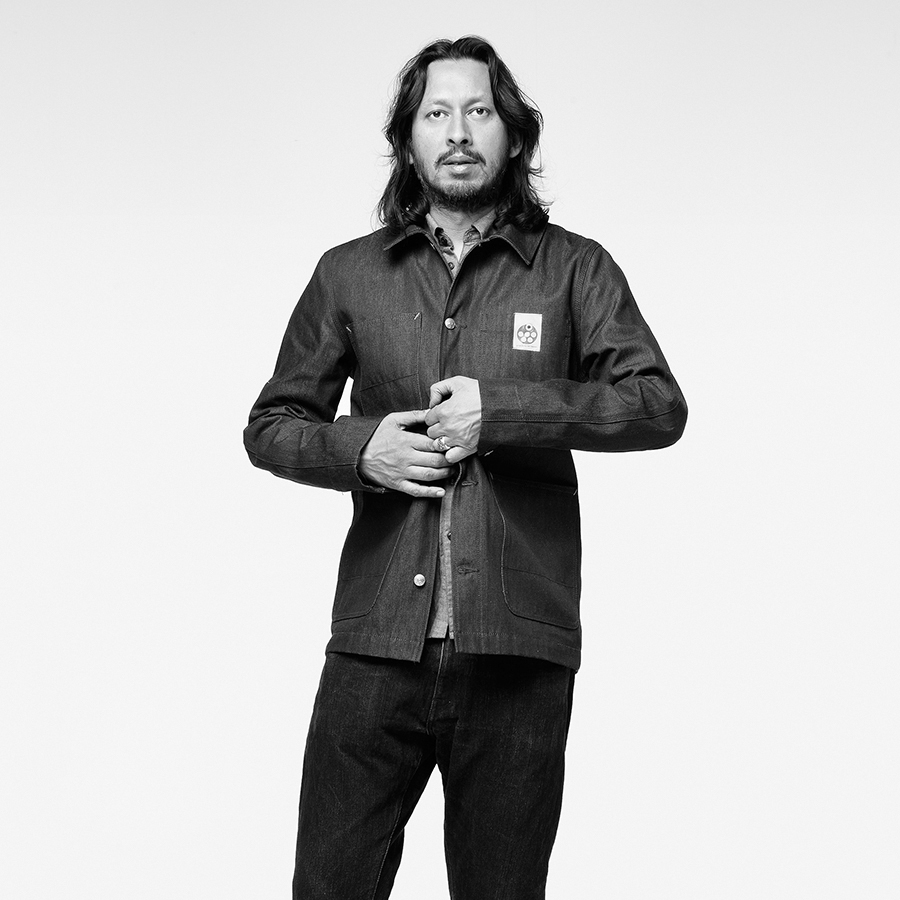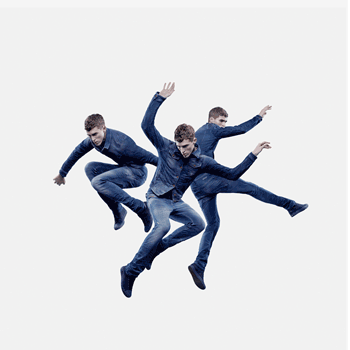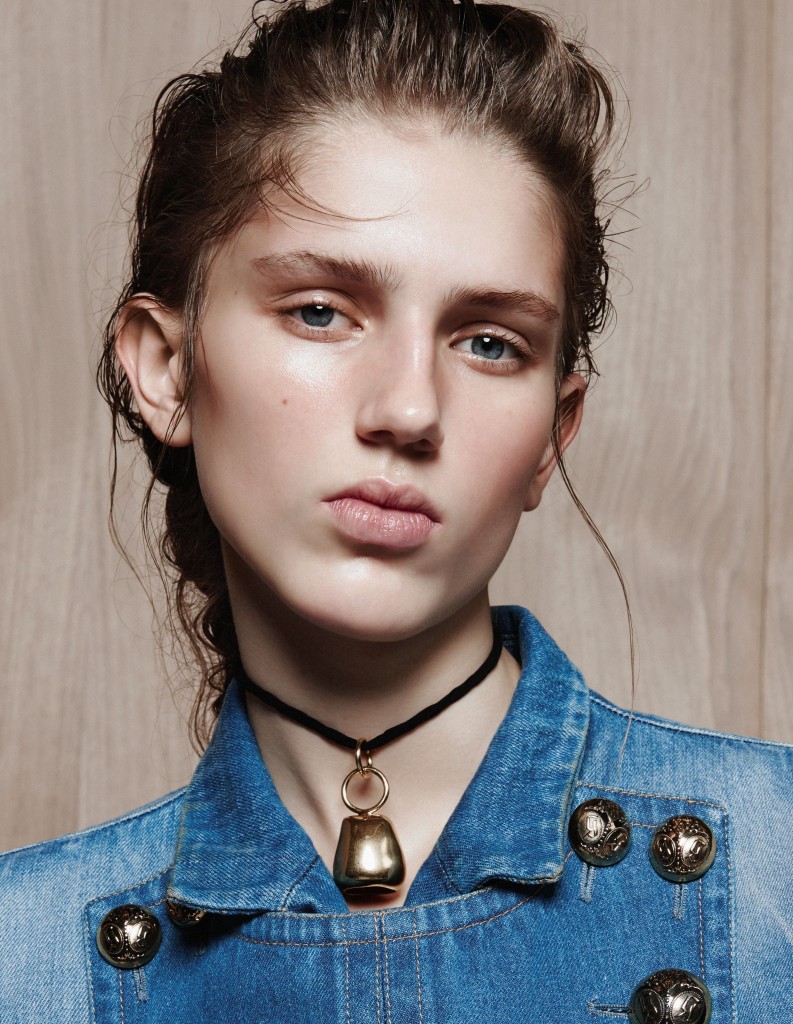
ON FUTURE OF DENIM BY SHUBHANKAR RAY CRASH 65
By Crash redaction
SHUBHANKAR RAY, GLOBAL BRAND DIRECTOR FOR G-STAR SINCE 2006, TALKS ABOUT THE NEW CAMPAIGN EMBODIED BY TWO NEW AMBASSADORS: SONGWRITER SERGIO PIZZORNO AND BALLERINA KEENAN KAMPA. SHUBHANKAR RAY EXPLAINS HIS VISION OF THE BRAND, HIS GOALS, ROLE MODELS AND INSPIRATION FOR THE FUTURE.
Since you usually work with actors and models, why did you pick a musician and ballerina to represent the new G-Star collection?
In this process we went through just talking with Sergio Pizzorno about creativity when I said it would be interesting for him to be in the G-Star campaign. I explained to him it would also be interesting to make an artistic contribution for the campaign. Sergio loved the idea of custom making music for the campaign that he was free to create himself for a cinema spot. Then we needed to find a ballerina and we found Keenan Kampa who was the first american to be accepted in a Russian ballet. In a way it was a very natural kind of fit to our DNA and the type of image that we built previously.
What is the concept behind the new campaign?
The concept is based on the idea of destroy and construct. One of the things with the last campaign was a TV spot with the skeleton dog. It was designed to showcase the fact that G-Star looks outside the world of fashion for inspiration. We look at the possibilities of denim and just by showing a running skeleton dog : in the film you see a jacket being made for a skeleton dog which suggests that we are encouraging our designers to look outside the world of fashion. The idea for this new campaign was to show that you have to break something to make something new. Then we decided to use real explosions during the shoot with Rankin. Really where you are blowing-up the clothing in a studio, it’s quite loud and it smells of explosives. Then capturing this on film so that we could show these transitions, where the skeleton dog morphs through an explosion, Keenan Kampa the ballerina dancer rises out of it, then she morphs into Sergio destroying his guitar and then goes back to the skeleton dog so it was a very simplistic way of destroying something to reconstruct something. The visuals showcase the pieces of how denim jeans are made. And this matches the philosophy of G-Star , in a way we can’t look backwards we have got to destroy backwards to make the future.
Do you think it’s important to work with real people to represent the G-Star new brand?
Yes for example with Keenan Kampa, the ballerina in the campaign: she is a real and authentic person. It was a great idea to use a real ballerina because it allows us to dramatize the main jean 3301 Jeg Skinny in the campaign. So if you’re going to show a sort of very modernistic three dimensional fit based on stretch innovation and fabrication innovation it’s quite logical then to have a ballet dancer because she can sort of accentuate this stretch movement, comfortability for women, fit for women. You don’t need to say anything because it’s embodied in the choice of her and implicit in the photos & film.
You built a new image for G-Star with photographer Anton Corbijn. Now you’re working with Rankin. Tell us a bit about the new collaboration.
Anton Corbijn was fantastic to work with in developing an iconic image for G-Star’s advertising. Many of us grew-up with his rock n roll imagery. Anton Corbijn remains part of the G-Star family as a collaborator, so even though we don’t do the current campaign with him, he is involved in our Leica project. To create, you’ve got to break some things to make new sort of conditions, you need to go forward. In this way we started working with photographer, Rankin to shoot Sergio & Keenan for A/W2013.
Can you tell us about your collaboration with the camera company Leica?
At G-Star we are more inspired by industrial design rather than fashion design so there are a lot of architects & designers that we admire. Modernistic architects like Oscar Niemeyer or like Le Corbusier, designers like Jean Prouvé. Similarly Leica for us falls in this category. We admire them for how the cameras look hand built, the functionnality of the camera, the durability of the camera: they are designed & built to last a long time like denim.
It allows us also to export our DNA into an industrial object. We’ve been working with Vitra for a few seasons now; and then we have worked with Leica for two years in order to re-imagine a new Leica camera. If you look at the 20th century most iconic’s designs, a Leica M3 would be in the top 5. It was an intersting exercise to try and apply denim related materials, denim construction knowhow, and our characteristic aesthetic into such an industrial object. The thing with Leica, Vitra and G-Star is that we have common goals: to make product with high functional and aesthetic life expectancy. Marc Newson also fits into this world of iconic industrial design for us. We admire also Dieter Ram’s objects for Braun in the 60’s; all of this has been an inspiration for G-Star. And this matches our RAW DNA very well.
How do you want the brand to grow ? What are our your aims for G-Star in the future?
To push forward the fabric innovation in denim, to push forward the silhouette and the shape of denim. We are not aiming to re-issue retro products but to create more modern denim. So to continue innovating in there to be relevant as a brand so that we can have have some kind of connections with people because that will also keep our brand alive for longer. Also to add a sustainability element where social and environmental responsibility becomes a condition for doing business so it’s not only a responsibility but it becomes a condition. That is what we kind of did since last year : with a RAW Sustainable programme made of 100% sustainable materials. This programme consisted of the lines RAW Nettle, RAW Recycled and RAW Organic. We have changed our focus to making our entire collection more sustainable. With this strategy we have been able to increase the percentage of sustainable materials from 1% in 2011 to 10% in 2012. Our aim is to continue to increase this percentage and So I think that in the future for G-Star there is a big focus with becoming more and more sustainable.








